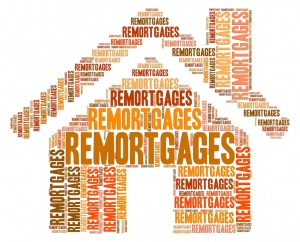An Updated Overview of the UK Remortgage Lending Market for Homeowners

For millions of homeowners across the UK, the journey into property ownership is marked by one of their most significant financial decisions: choosing a mortgage. The initial process feels monumental as one learns a new process of selecting a lender, deciding on the type of mortgage, and locking in a deal that often spans two, three, or five years. Whether the choice falls upon a fixed rate, offering the comfort of predictable monthly payments, a tracker that moves with the Bank of England’s base rate, or even an interest-only arrangement appealing for its short-term affordability, every mortgage shapes the next phase of a homeowner’s financial life.
Yet, as the initial term draws to an end, many homeowners find themselves at a critical crossroads. The deal that once seemed perfectly tailored is about to expire, and with it comes the challenge, and opportunity, of remortgaging. Remortgaging, at its core, is the process of switching your mortgage to a new deal, either with your current lender or, often more lucratively, with a new one. This juncture is pivotal because, unless action is taken, most lenders will automatically move a customer’s mortgage onto their standard variable rate, or SVR. While the SVR is easy to slip into by inertia, experts regularly warn against it.
The rationale is simple as a lender’s SVR tends to be significantly higher than the rates available through remortgaging. This difference can add up to hundreds or even thousands of pounds per year in additional interest, which is money that could otherwise be put to much better use. The SVR is also inherently unpredictable, rising or falling at the whim of the lender, and often moving upward in response to changes in the Bank of England’s base rate or market conditions. For homeowners seeking stability and a shield against the threat of rising rates, allowing a mortgage to drift onto the SVR is rarely the most prudent course.
This is where the true power of remortgaging comes into play. By actively shopping for a new mortgage, homeowners regain the ability to choose the type of deal that best fits their evolving financial circumstances. The fixed rate remortgage remains a perennial favourite, especially in uncertain economic times. Locking in a competitive rate not only guards against the possibility of future rate hikes but also allows for precise budgeting, a comfort many households value. Alternatively, homeowners who anticipate interest rates will fall may consider tracker mortgages, but the risk of rates rising cannot be ignored.
It is important to note that, while loyalty to your existing lender may seem an admirable quality, the mortgage market is one domain where allegiance rarely pays. Lenders reserve their most attractive rates for new business, and the most substantial savings are often found by switching providers. Comparing deals across a range of lenders could potentially save homeowners significant sums over the life of their mortgage term, simply by taking the time to look beyond their current provider’s offerings.
Another compelling benefit of remortgaging is the opportunity to release equity. As property values have risen across much of the UK, homeowners often find themselves sitting on considerable untapped equity. Through a remortgage, it is possible to turn this built-up value into cash, providing a financial springboard for home improvements, a dream holiday, debt consolidation, or other major expenses. The process is straightforward: the new mortgage is arranged for an amount greater than the existing current mortgage debt, and the difference is released as cash to the homeowner. This calls for consideration and some homeowners may want to ask questions of remortgage experts as to how this could benefit them now and into the future before making a decision to cash out their built-up equity.
Market trends in 2025 have only heightened the appeal of remortgaging. Despite the Bank of England’s base rate standing at 4.25%, many remortgage lenders have been trimming their rates, with some deals dipping below the 4.0% threshold. In such a climate, the incentive to act before reverting to an SVR is greater than ever. The remortgage market is highly competitive, with lenders vying for business by offering attractive rates, cashback incentives, and streamlined application processes.
Shopping for a remortgage has also evolved with technology. Homeowners no longer need to trawl from lender website to lender website, laboriously comparing rates and terms. The rise of shopping online with remortgage brokers has transformed the experience into one of convenience and efficiency. By providing a few basic details, homeowners can receive quotes from a wide variety of lenders, all in one place. Many brokers even have access to exclusive deals that are not available by going direct to the lender, making them an excellent starting point for anyone considering their options.
The remortgage lending market in the UK represents a powerful tool for homeowners seeking to manage their finances more effectively. Whether the objective is to avoid the pitfalls of a lender’s SVR, secure a fixed rate for peace of mind, release equity for personal projects, or simply access the most competitive rates available, the process of remortgaging merits careful consideration and proactive engagement. By shopping around, leveraging online broker platforms, and weighing the full spectrum of options, homeowners can ensure their mortgage continues to serve their needs, both now and in the years to come.



